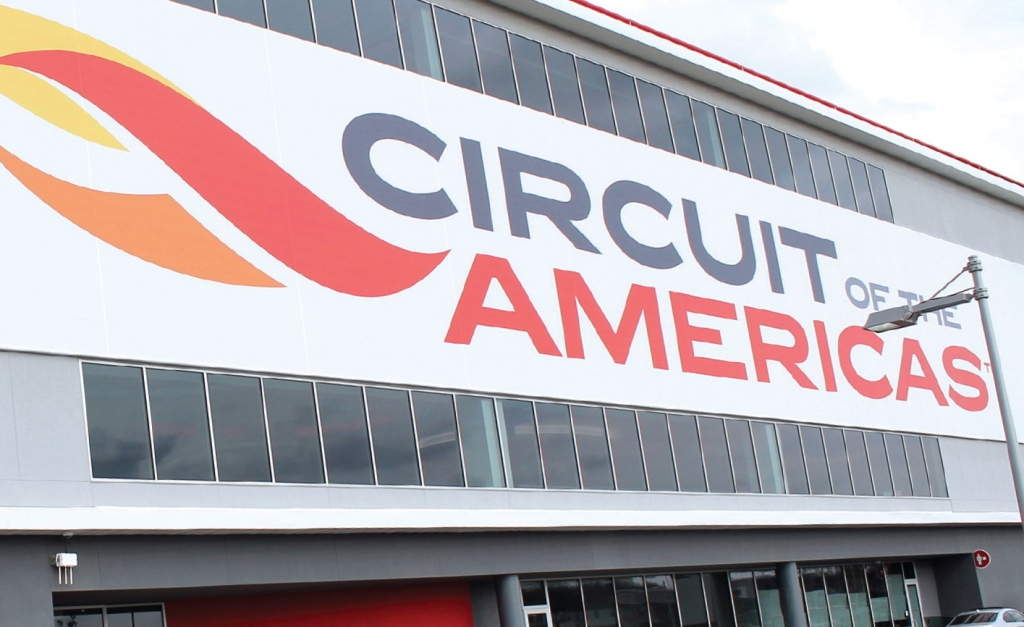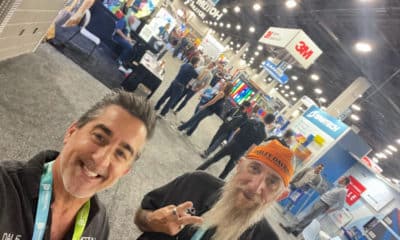Today’s sports fans differ from their parents. Whereas old-school devotees embrace more home-
grown diversions, many younger athletics aficionados focus on games with an international following. Americans’ embrace of soccer has been more widely recognized, but Formula One (F1) racing also is gaining legions of U.S. fans.
Positive proof of this was the construction of Circuit of the Americas (COTA) near Austin, TX. The stadium, the first built expressly for F1 racing in the U.S, seats approximately 120,000 to witness events on the 3.4-mile track.
Track owners hired FD2S, an Austin-based EGD firm, to develop the program. Steven Stamper, the firm’s principal, said stadia signage comprised little of the firm’s portfolio, but noted the client sought a “fresh wayfinding perspective.”
“The mindset of a stadium user is much different than someone using a healthcare or institutional facility,” he said. “They’re typically under less stress and more free to explore the environment. Also, because of F1’s international following, we strive for a clean style that emphasizes simple graphics and symbols.”
In contrast to most sports leagues, Stamper said F1 places strict requirements on onsite branding because stadia must not overpower the event. To create context, FD2S studied international stadiums, airports and F1 tracks. To seamlessly mesh site signage with F1 event signage, designers used Futura, F1’s chosen font.
National Signs (Houston) won the contract to build COTA’s exterior signage, and Young Electric Sign’s (YESCO) Salt Lake City and Chandler, AZ branches built interior and building-mounted signs.
All told, the project entailed 347 exterior and 1,727 interior signs. Stamper said project modifications during fabrication included eliminating perforated and textured patterns from some signs, and flagpoles replaced large channel letters. The track’s 133-ft. elevation shift created irregular sightlines and dictated several of the changes.
Advertisement
COTA’s most iconic signs, 40-ft.-tall pylons at the gateway entrance, were mounted on 3-ft-.diameter piers engineered for direct burial 12 ft. deep in the ground. The piers were set in a 6-in.-deep concrete pad. The 5052 aluminum-alloy pylons were coated with Matthews acrylic-polyurethane primer, paint and high-gloss clearcoat, and the graphic faces were decorated with digitally printed Orafol 951 high-performance vinyl.
To help F1 fans locate their seats, National Signs built two-sided, painted-aluminum pylons that feature maps made by iZone Imaging’s (Temple, TX) phenolic-resin, high-pressure-laminate maps, with complementary, plotter-cut Oracal carbon-fiber vinyl. For the COTA’s main-ID building graphics, Britten Studios (Traverse City, MI) fabricated a behemoth, flexible-face graphic that’s fitted with SignComp aluminum extrusions.
Stamper said choreographing design and installation provided a major project challenge: “We had to coordinate with four different architectural firms, and numerous contractors and consultants, while also coordinating with public-safety officials, the marketing department and site-specific app developers. Creating effective pedestrian and vehicular flow for a 120,000-seat facility requires careful study.”



 Paula Fargo2 weeks ago
Paula Fargo2 weeks ago
 Real Deal1 week ago
Real Deal1 week ago
 Photo Gallery2 weeks ago
Photo Gallery2 weeks ago
 Projects1 week ago
Projects1 week ago
 Business Management1 week ago
Business Management1 week ago
 News19 hours ago
News19 hours ago
 News1 week ago
News1 week ago
 Dale Salamacha5 days ago
Dale Salamacha5 days ago







